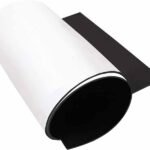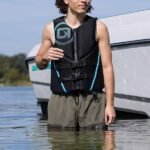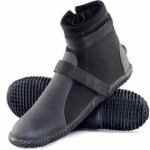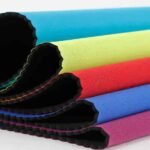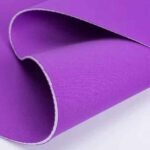When it comes to water sports, wearing the right wetsuit is essential for comfort, performance, and safety. A shorty wetsuit, also known as a shortie, is a popular option for those seeking flexibility and warmth in warmer waters. But what exactly is a shorty wetsuit, and how does it differ from other types? In this guide, we will explore everything you need to know about shorty wetsuits, from their features and benefits to how they provide insulation, and when they are best suited for your activities.
A shorty wetsuit is a type of wetsuit designed with short sleeves and legs, offering comfort and flexibility for water sports in warmer conditions. It provides some insulation while allowing freedom of movement, making it ideal for activities like surfing, snorkeling, and paddleboarding.
Now that we have a basic understanding of what a shorty wetsuit is, let’s take a closer look at its features and why it’s a top choice for many water enthusiasts.
What is a Shortie Wetsuit?
A shorty wetsuit, also known as a "shortie," is a type of wetsuit that covers the torso and extends to the upper thighs or knees, but has short sleeves and no legs or full arm coverage. These wetsuits are often made from the same materials as their full-length counterparts, such as neoprene, and are designed to offer both insulation and flexibility.
Shorty wetsuits are perfect for those who want to maintain warmth in mildly cold water, but don’t require the full coverage of a traditional wetsuit.
Shorty wetsuits are not just defined by their shorter design—they also feature a range of characteristics that make them ideal for certain water sports and conditions. Let’s take a deeper look at these features.
What Are the Main Features of a Shorty Wetsuit?
Shorty wetsuits typically have a number of key features that set them apart from other types of wetsuits, including:
-
Material: Most shorty wetsuits are made from neoprene, a synthetic rubber known for its durability, flexibility, and excellent insulation properties. The neoprene is usually lightweight and stretchy, which allows for better movement in the water.
-
Short Sleeves and Legs: The defining feature of a shorty wetsuit is its short sleeves and legs, which are ideal for warmer water environments. The shorter design makes them more breathable and allows for greater flexibility, which is important for activities like surfing, swimming, and snorkeling.
-
Thickness: Shorty wetsuits are generally thinner than full-length wetsuits, typically ranging from 2mm to 3mm thick. This provides insulation without making the wearer too hot, which is important when in warmer waters or during mild conditions.
-
Zippers: Many shorty wetsuits feature front or back zippers for easy entry and exit. The placement and type of zipper vary between brands, but they are designed to make the wetsuit easier to put on and take off.
The main features of a shorty wetsuit—its shorter length, flexible neoprene material, and thinner thickness—make it an excellent choice for water sports in moderate water temperatures, offering both warmth and freedom of movement.
With these features in mind, many people wonder if shorty wetsuits are suitable for swimming or other water sports. Let’s take a closer look at their performance in the water.
Can You Swim in a Shorty Wetsuit?
Yes, shorty wetsuits are ideal for swimming, especially in warmer waters. Their lightweight material and flexible design allow for a full range of motion, which is essential when swimming. Shorty wetsuits are designed to keep the body warm while allowing for maximum comfort and ease of movement in the water. This makes them a popular choice for swimmers who need protection from cold water but don’t want to be restricted by a full wetsuit.
Shorty wetsuits are great for swimming in warmer waters, providing insulation and comfort without restricting movement.
Now, you may be wondering: are short wetsuits always the best choice, or do full wetsuits sometimes have advantages? Let’s compare both options to help you decide which might be better for your needs.
Are Short or Long Wetsuits Better?
The choice between a short or long wetsuit depends on the water temperature and the activity you’re engaging in. Here are some factors to consider:
-
Water Temperature: Full wetsuits are best for colder waters, as they provide more coverage and insulation. Shorty wetsuits, on the other hand, are perfect for milder temperatures (typically between 60°F and 75°F or 15°C and 24°C), where a full wetsuit may be too warm.
-
Comfort and Flexibility: Shorty wetsuits are more flexible and allow for better mobility, especially in water sports that require a lot of movement, such as surfing, paddleboarding, or wakeboarding. Full wetsuits can be more restrictive, but they provide better insulation for longer periods in the water.
-
Activity Type: For activities like surfing or snorkeling, a shorty wetsuit is often more comfortable and practical. For scuba diving or long-duration swimming in cold waters, a full wetsuit may be the better option.
Short wetsuits are ideal for warmer waters and activities that require flexibility, while long wetsuits are better for colder conditions and longer exposure to the water.
So, how exactly does a shorty wetsuit keep you warm in mild waters? Let’s explore its insulation capabilities in more detail.
How Does a Shorty Wetsuit Provide Insulation?
Despite their shorter length, shorty wetsuits can still provide effective insulation. Here’s how:
-
Neoprene Material: The primary insulation in shorty wetsuits comes from the neoprene material. This material traps water between the skin and the wetsuit, and the body warms this layer of water, providing insulation. The neoprene also helps prevent the loss of body heat.
-
Thickness: The thickness of a shorty wetsuit is typically between 2mm to 3mm, which strikes a balance between insulation and flexibility. This thickness is sufficient for maintaining body temperature in warmer waters, but not so thick that the wearer becomes too hot.
-
Fit: A shorty wetsuit is designed to fit snugly against the body, ensuring that the trapped water layer stays close to the skin. The better the fit, the more effectively the wetsuit insulates the body.
Shorty wetsuits provide insulation by trapping a thin layer of water between the skin and the suit, while the flexible neoprene material allows for maximum comfort and movement.
Conclusion
A shorty wetsuit is an excellent option for water enthusiasts who want a versatile, flexible, and comfortable suit for warmer waters. With its combination of insulation, mobility, and protection, a shorty wetsuit is ideal for activities like surfing, snorkeling, and paddleboarding. While full wetsuits may be necessary for colder waters, shorty wetsuits offer the perfect balance for moderate conditions. Whether you are looking for custom wetsuits for your brand or just want to know more about shorty wetsuits, understanding their features and benefits will help you make the right choice for your next water adventure.
If you’re interested in learning more about our custom shorty wetsuits or need a personalized solution for your brand, don’t hesitate to contact us today. We offer high-quality, customizable wetsuits for all your water sports needs.


